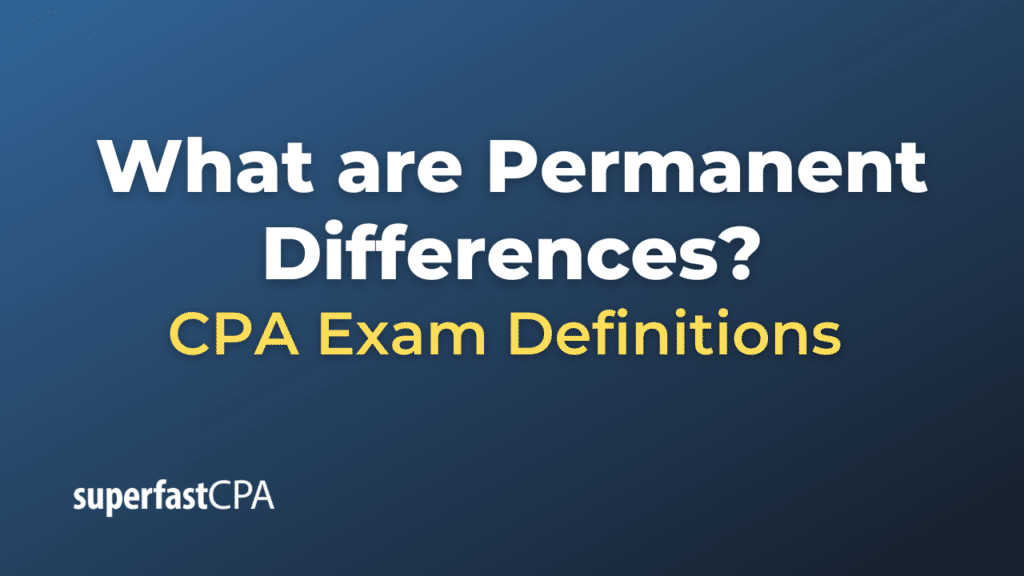Permanent Differences
Permanent differences in accounting refer to differences between taxable income (income as computed per tax regulations) and pre-tax financial income (income as reported in the financial statements) that do not reverse over time. They are caused by items of revenue, gain, expense, or loss that are recognized for financial reporting purposes but are never recognized for income tax purposes, or vice versa.
A few examples of permanent differences include:
- Non-Taxable Revenues or Gains: These are amounts that are included in financial income but are not taxable. For instance, interest on municipal bonds is usually tax-exempt and would be included in financial income but not in taxable income.
- Non-Deductible Expenses or Losses : These are expenses or losses that are included in financial income but cannot be deducted for tax purposes. An example could be fines and penalties. A company can show these as expenses in its financial income, but they are not deductible on its tax return.
- Dividends Received Deduction: Corporations often receive a tax deduction for dividends received from other corporations in which they own a stake. This leads to a permanent difference because while these dividends are fully included in the financial income, only a portion is included in the taxable income.
- Tax Credits: Certain tax credits reduce taxes payable but do not affect accounting income.
It’s important to understand that permanent differences do not give rise to deferred tax assets or deferred tax liabilities, as they do not reverse in future periods. They will always cause a discrepancy between the tax expense reported in the financial statements and the actual tax payable to the government.
Example of Permanent Differences
Suppose a corporation invests in municipal bonds and receives $10,000 in interest income on these bonds in a given year. For financial reporting purposes, this interest income is reported on the corporation’s income statement, increasing its pre-tax financial income by $10,000.
However, in the United States, interest earned on municipal bonds is generally exempt from federal income taxes. Therefore, this $10,000 in interest income would not be included in the corporation’s taxable income.
As a result, there’s a permanent difference of $10,000 between the corporation’s pre-tax financial income and taxable income for that year. This difference will not reverse in future periods; the interest income from the municipal bonds will always be included in financial income but will never be taxed. Hence, it’s a “permanent” difference.
To reflect this in a numerical example:
- Pre-tax financial income (as per financial reporting): $100,000
- Taxable income (as per tax reporting): $90,000 (this excludes the $10,000 tax-exempt interest income)
Here, we have a permanent difference of $10,000, which is the interest income from the municipal bonds.













